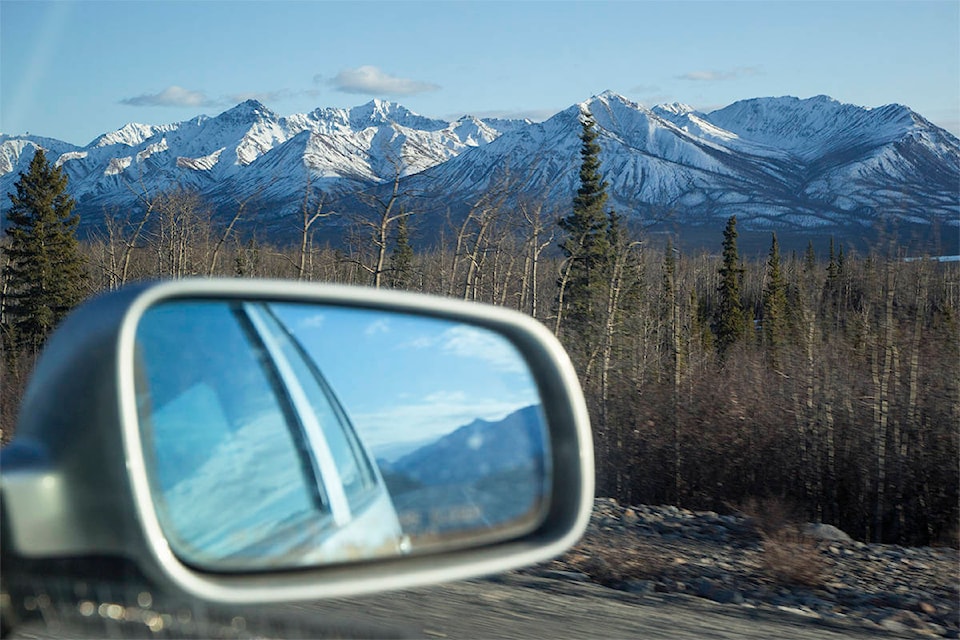The Yukon has experienced precipitation below – in some areas, far below – the historical average this past winter, meaning a reduced risk of flooding in vulnerable areas, according to territorial hydrologists.
“Less snow on the ground and lower distributions of (precipitation) … basically means there is less potential for significant spring snowmelt and therefore reduced risk of spring flooding,” Department of Environment senior hydrologist Benoit Turcotte said.
Turcotte was the lead hydrologist – along with two hydrological technologists – behind the recent Yukon Snow Survey Bulletin and Water Supply Forecast released March 1, which “provides a summary of winter meteorological and streamflow conditions for Yukon, as well as current snow depth.”
The report, which documented trends from October 2018 to February 2019, found that period was “largely warmer than the historical average across the territory,” although February was colder than usual. Rain and snowfall have been “below to well below historical average” for most of the territory.
Mayo received the least precipitation in the entire territory during this time, getting only 31 per cent of its historical average, the report found, followed by Faro at 47 per cent and Carmacks at 54 per cent. Dawson City and Whitehorse were more normalized, at 87 per cent and 101 per cent of their usual averages. Old Crow actually received the most precipitation in the territory, at 109 per cent of what it has historically received.
Month by month, October and November were both warmer than average, with “a warm spell” at the end of November leading to “substantial loss of snow cover in the southwest Yukon.” December temperatures “fluctuated significantly,” and precipitation was “varied” with the north and southwest of the territory seeing more precipitation than usual while the rest of the Yukon was “well below average.”
In January, Whitehorse and Old Crow saw way more snow than usual – 120 per cent and 150 per cent respectively – while “the remaining stations recorded well below average, with a minimum of eight per cent.” Only February was colder than its historical norm, but these “cool and clear conditions kept precipitation amounts low as well.”
Across the territory, average temperatures during this time period were all up, with Old Crow seeing the most significant increase of 3.7 degrees Celsius above average. Whitehorse had a temperature deviation of 1.1 degrees over its historical average, Dawson City was up 1.5 degrees and Haines Junction was up 2.7 degrees.
Although rain and snow have been in short supply, Turcotte noted that even though some lakes and rivers in the Yukon have been at “below average” levels, they are not anywhere close to the lowest they have ever historically been. If the territory were to see a wet spring and summer, water levels and precipitation could easily return to at or above historical averages, but if “spring and summer are dry… we could end up playing close to the historical minimum,” he said.
Dawson City – particularly Rock Creek and the Klondike Valley – and Old Crow are areas which historically have had the highest risk of flooding in the territory, he said, followed by Ross River, Pelly Crossing and “to a lesser extent” Mayo, which have a lower but still present risk.
Of those areas, only Old Crow is close to their average precipitation rates and snow – the unseasonably warm mid-March weather which has held most of the territory has not reached that area – and so has a closer-to-normal risk of flooding. That risk is still low, however, he said, as it would take a very rapid “melting event” – i.e., things would have to get real warm, real quick – with constant above-zero temperatures to cause enough melt for that to occur.
Even with the warm weather in the southern part of the territory, it was still freezing at night he said, and so “it wasn’t a record melting” for this time of year.
If the low-precipitation trend holds, this could also mean reduced water for some ecosystems, Turcotte noted. Although he was “aware some species and habitats benefit” from occasional flooding, Turcotte is, as he pointed out, “a hydrologist, not a biologist” and so couldn’t comment on potential impacts on wild flora or fauna.
“It’s a bad thing for me, because I’m in charge of flood forecasting for people,” Turcotte joked, adding that he’s new to the position of hydrologist and scientifically interested in flooding events and how to handle them.
“Of course (people) are happy when there is no flooding.”
The Snow Survey and Water Supply Forecast for March is set to be released in April, which will give “more accurate” prediction for the territory’s water supply, he said. A survey report for April will also come out in May.
Contact Lori Fox at lori.fox@yukon-news.com
